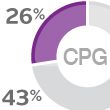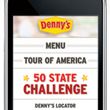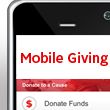By Amy Vale
 At this year’s Mobile Marketing Summit: Holiday Focus, hosted by Mobile Marketer, Kraft made a definitive statement about their mobile plans. The CPG brand, soon to be renamed Mondalez, will move 10 percent of its media budgets to mobile. While that’s a big move for a brand that’s become a household name among millions of consumers worldwide, there’s still a lot of mobile learning that needs to take place. Here are two mobile essentials that will help developers market and monetize their CPG apps.
At this year’s Mobile Marketing Summit: Holiday Focus, hosted by Mobile Marketer, Kraft made a definitive statement about their mobile plans. The CPG brand, soon to be renamed Mondalez, will move 10 percent of its media budgets to mobile. While that’s a big move for a brand that’s become a household name among millions of consumers worldwide, there’s still a lot of mobile learning that needs to take place. Here are two mobile essentials that will help developers market and monetize their CPG apps.
Immerse with creative
For many consumers, mobile acts as a natural extension of the traditional TV experience. Smartphones and tablets aren’t used at one single point in the day. They’re used morning, noon and night repeatedly; they support long-form media content; they often complement other media consumption via TV, print and online. To effectively monetize CPG apps, it will come down to creating a rich, immersive user experience that’s both entertaining and informational. One way to create this ‘entertaining’ effect is mobile video.
Recent research from Nielsen found that mobile video ads for CPG brands generated a significantly higher level of awareness, favorability and purchase interest on mobile, compared to TV and online video. The engagement and ROI potential is clearly there; so app developers should partner with rich media providers to ensure integrations are seamless for their advertisers’ creative executions to be delivered to mobile users. CPG app users will be far more receptive to see, and act on, ads when they are packaged creatively in rich media formats like expandable banner ads, in-banner video, etc.
Follow your audience
Just as with any smart mobile strategy, it’s important to identify your audience, their primary devices, the type of content (and ads) that will gain their attention and where they’re using their mobile devices. Then follow your audience using targeted ads.
According to a recent Wall Street Journal article, a growing number of U.S. food makers are using mobile games to entertain, engage and ultimately, sell their products to kids on smartphones and tablets. As can be seen in Mojiva’s recent Parenting MAG, parents are increasingly becoming reliant on their smartphones and tablets to entertain their kids. In fact, 56 percent of parents reported giving their mobile devices to their kids for entertainment purposes at least once a day and 57 percent have previously downloaded or added an application or web page on their mobile device for their child to use. The lesson for developers is pretty simple - the best mobile gaming experience possible will inevitably bring users back to the app, repeatedly. The more frequently these users get comfortable with and use the mobile gaming app (and share it across their social network), the more likely they’ll be to make in-app purchases.
No matter what monetization route you follow, be sure to partner with an advertising network that has strong reach and scalability across multiple platforms to generate a consistent stream of revenue from your CPG app.



